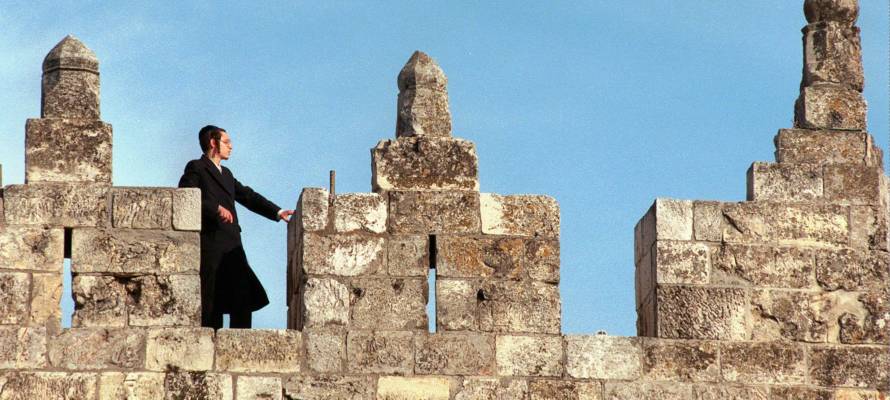The new portion of the historic trail adds about one kilometer to a path that skirts the Old City atop its ancient walls.
By Tsivya Fox-Dobuler
A new section of the walking path atop Jerusalem’s Old City walls was inaugurated on Tuesday. The path, which is called “The Ramparts Walk,” had about one kilometer added to its northern section.
The project took about five years to complete and the inauguration was attended by Minister of Jerusalem Affairs Ze’ev Elkin and the ministry’s director-general Mordechai Benita. The East Jerusalem Development Company (PAMI) oversaw the project at a cost of NIS 11 million.
“I salute Minister Ze’ev Elkin for investing so much money, time and effortsto open the north-eastern section of the ramps of the walls of the Old City,” commented Arieh King, Jerusalem City Councilman and director and founder of the Israel Land Fund, in conversation with United With Israel.
“This new section, starting from Damascus Gate and ending at Lion’s Gate, is an area, unfortunately, that tourists in general and Jews in particular rarely visited in the past. Now that the ramp is open, it is one of the ways that many Jews and others will return to this area. It provides beautiful views and I am looking forward to seeing thousands of tourists every day visiting this area,” King said
The rampart walls were built by the Ottoman Turkish Sultan Suleiman the Magnificent, from 1535 to 1542. With the new section, the ramparts walk is now about three kilometers in length, stretching from Jaffa Gate to Lion’s Gate. Walking the walls provides views of the Old City’s four quarters: the Jewish, Christian, Muslim and Armenian sections.
Along the way, visitors can gaze at ancient architecture and enjoy the various smells and sounds of the cultures below. Looking outward, the modern and bustling city of Jerusalem awaits, beyond the Old City’s walls.
“The promenade is the historical trek of Jerusalem, and those who walk it immerse themselves in an experience of culture and heritage that at the same time preserves the environment,” Benita said, reported the Jerusalem Post. “The walk is conducted in a more relaxed atmosphere than would be had on the street level, and it reduces the congestion in the alleyways,” he added.
Several of the Old City’s most religious sites can be seen from the walls. These include the Hurva Synagogue, the Church of the Holy Sepulcher and the Dome of the Rock.
The Hurva Synagogue was built in the 18th century and destroyed several times, including by the Jordanian Legion during Israel’s War of Independence in 1948. It was rebuilt in 2010.
“The Wall Promenade Project expresses the connection of the different parts of Jerusalem,” Elkin said, according to the Post. “Just as the different parts of the Old City cannot be severed from it, it is impossible to detach Jerusalem from the Old City, which represents its very heart. The walls, whose original purpose was to separate [Jerusalem from its surroundings], today express precisely the connection [between the different parts] of Jerusalem: a united Jerusalem.”
